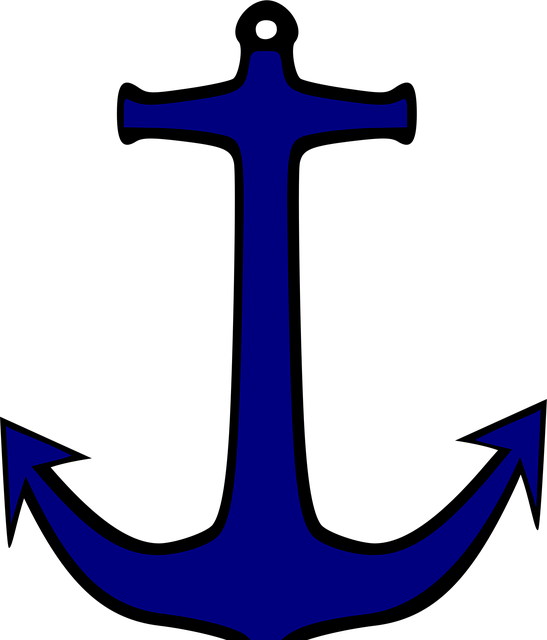Internal linking boosts SEO and user experience by optimizing anchor text—clickable phrases that link pages. Using descriptive, relevant keywords like "learn more about SEO strategies" signals search engines about linked page value, improving crawling and rankings. Varying anchor text naturally with target keywords enhances user navigation while maintaining readability. Measuring link performance refines strategies, focusing on data-driven insights for optimal SEO and user satisfaction.
Looking to boost your content-heavy site’s SEO? This guide breaks down the art of internal linking, a powerful strategy to enhance search visibility. We’ll explore why internal links matter, from improving crawlability to enhancing user experience. Learn the ins and outs of choosing effective anchor text, strategically placing links, and optimizing for both users and search engines. Discover best practices tailored for content-rich sites to ensure your internal linking efforts drive meaningful results.
- Understanding Internal Linking for SEO
- Choosing Relevant Anchor Text
- Implementing Strategic Internal Links
- Optimizing for User Experience
- Measuring Link Performance
- Best Practices for Content-Heavy Sites
Understanding Internal Linking for SEO

Internal linking is a fundamental SEO strategy for content-rich websites. By strategically connecting pages within your site, you enhance user experience and allow search engines to crawl and index your content more efficiently. When done right, it acts as a roadmap, guiding users and search algorithms through your website’s vast information network.
One of the key aspects of internal linking is optimizing anchor text. This refers to the clickable words or phrases that link one page to another. Using descriptive and contextually relevant anchor text can significantly boost SEO efforts. For instance, instead of generic links like “click here,” opt for optimized anchor text such as “learn more about SEO strategies” or “read our comprehensive guide on content optimization.” This not only improves user experience but also signals to search engines that the linked page provides valuable information related to the anchor text.
Choosing Relevant Anchor Text

When crafting internal links for content-heavy sites, selecting the right anchor text is a strategic move that boosts your SEO efforts. Anchor text refers to the clickable words or phrases that appear in hyperlinks, and it’s crucial for guiding both users and search engines to relevant pages on your site. The goal is to create an optimized anchor text strategy that subtly incorporates keywords while maintaining readability.
To effectively optimize anchor text, consider using variations of target keywords naturally. For instance, instead of “click here,” you could use phrases like “learn more about SEO strategies” or “read our comprehensive guide on internal linking.” This approach not only enhances user experience but also signals to search engines that the linked content is relevant and valuable. Remember, a well-thought-out optimize anchor text strategy can significantly impact your site’s visibility in search results.
Implementing Strategic Internal Links

Implementing strategic internal links is a critical step to enhancing your site’s SEO and improving user experience. When done right, it involves carefully selecting relevant pages to link between, focusing on optimize anchor text that accurately reflects the linked content. This approach not only helps search engines understand your site’s structure but also guides users towards valuable information.
An optimize anchor text tutorial should include tips like using specific keywords, keeping anchor text natural and varied, and ensuring links are contextually relevant. For instance, instead of generic phrases like “click here,” use descriptive terms that highlight the benefit or topic of the linked page. This strategy, coupled with consistent implementation, contributes to better optimize anchor text SEO, making your site more visible and user-friendly.
Optimizing for User Experience

Optimizing for user experience is a crucial aspect of effective internal linking and overall SEO success. When implementing an internal linking strategy, ensure that your site’s navigation is intuitive and accessible to users. Well-structured menus, easy-to-read headings, and relevant anchor text all contribute to a positive user experience.
The choice of anchor text is pivotal in this process. Use descriptive and contextually relevant keywords when creating links within your content. For instance, instead of generic phrases like “click here,” opt for optimized anchor text that mirrors the target page’s topic. This not only aids search engines in understanding the link’s purpose but also enhances user engagement by providing a clear indication of what lies ahead. An optimize anchor text tutorial can guide you through this process, ensuring every internal link adds value to your site’s overall SEO and user journey.
Measuring Link Performance

Measuring link performance is a crucial step in understanding what’s working and what needs improvement in your internal linking strategy. By utilizing tools like Google Search Console and analytics platforms, you can gain valuable insights into how users interact with your content through links. Keep an eye on metrics such as click-through rates (CTRs) from internal links to assess the effectiveness of your anchor text optimization.
One of the key aspects to focus on is optimizing anchor text in a natural way that aligns with user search intent. Effective anchor text tips include using relevant keywords, varying sentence structures, and incorporating branded terms. Regularly review and adjust your anchor text optimization strategies based on data-driven insights to enhance overall SEO performance for content-heavy sites.
Best Practices for Content-Heavy Sites

When implementing SEO internal linking on content-heavy sites, best practices involve a strategic approach to link placement and optimize anchor text. Start by identifying key topics and relevant pages within your site using keyword research tools. Then, craft anchor text that is both descriptive and includes target keywords naturally. Instead of generic phrases like “click here,” use specific terms that reflect the linked content’s focus—for example, “read more about SEO best practices” or “explore our in-depth guide to internal linking.”
Focus on creating a optimize anchor text strategy that enhances user experience and signals search engines about your site’s organization. Incorporate optimize anchor text tips like using hyper-relevant keywords, varying anchor text length, and ensuring a balanced distribution of links throughout your content. Remember, the goal is to create a natural-feeling network of internal connections that both improves discoverability and keeps users engaged with your valuable content.
